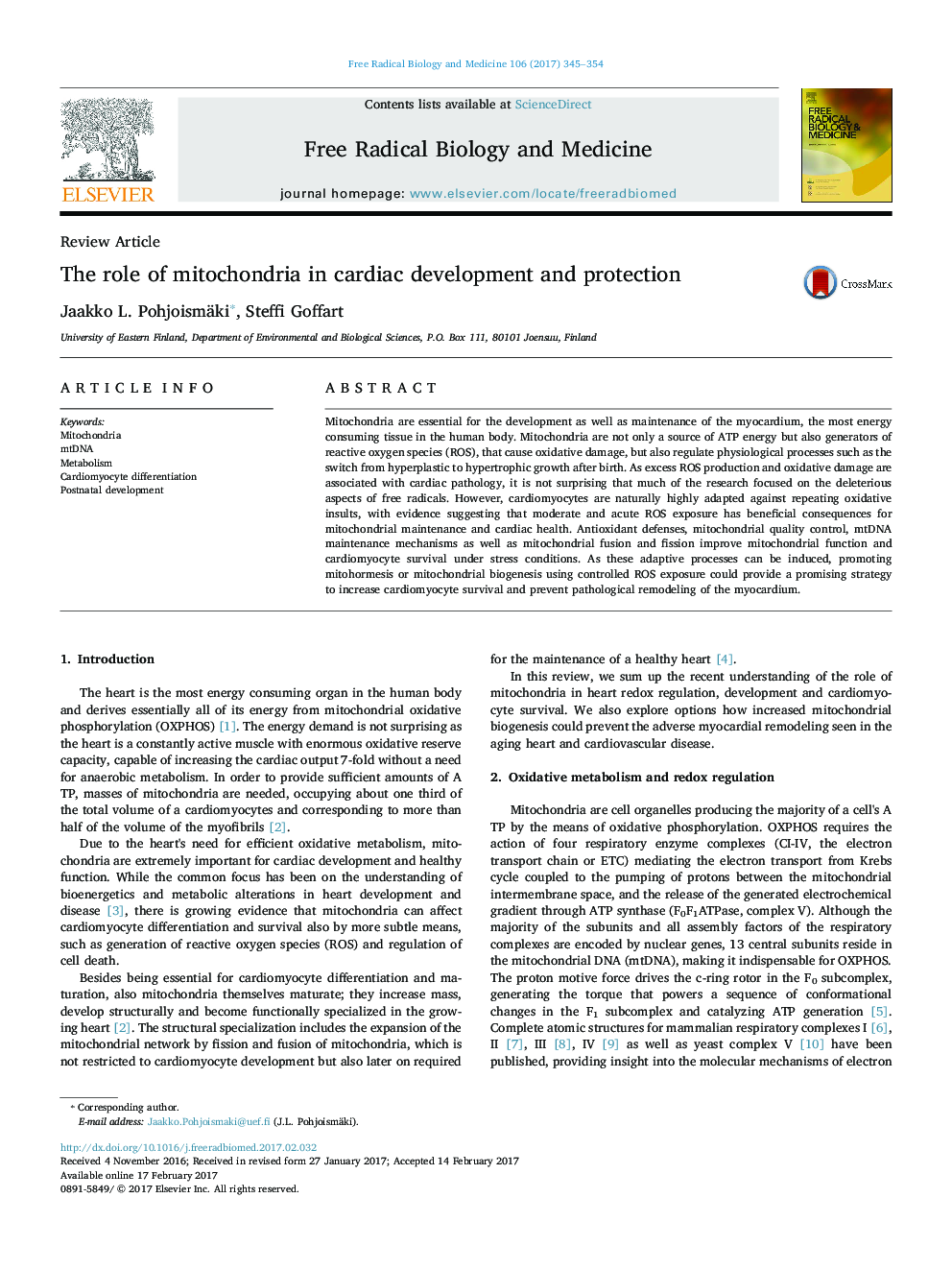| Article ID | Journal | Published Year | Pages | File Type |
|---|---|---|---|---|
| 5501792 | Free Radical Biology and Medicine | 2017 | 10 Pages |
Mitochondria are essential for the development as well as maintenance of the myocardium, the most energy consuming tissue in the human body. Mitochondria are not only a source of ATP energy but also generators of reactive oxygen species (ROS), that cause oxidative damage, but also regulate physiological processes such as the switch from hyperplastic to hypertrophic growth after birth. As excess ROS production and oxidative damage are associated with cardiac pathology, it is not surprising that much of the research focused on the deleterious aspects of free radicals. However, cardiomyocytes are naturally highly adapted against repeating oxidative insults, with evidence suggesting that moderate and acute ROS exposure has beneficial consequences for mitochondrial maintenance and cardiac health. Antioxidant defenses, mitochondrial quality control, mtDNA maintenance mechanisms as well as mitochondrial fusion and fission improve mitochondrial function and cardiomyocyte survival under stress conditions. As these adaptive processes can be induced, promoting mitohormesis or mitochondrial biogenesis using controlled ROS exposure could provide a promising strategy to increase cardiomyocyte survival and prevent pathological remodeling of the myocardium.
